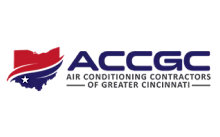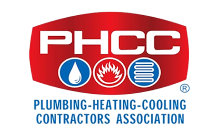Whole House Ventilation for Homes in Cincinnati and Surrounding Communities
Whole house ventilation refers to the exhaust and supply of air into the house. To improve indoor air quality, the indoor air requires periodic replacement using fresh air. Fresh supply air comes from outside and is exchanged with stale, stagnant, moist air inside homes using ventilators, fans, ducts, and vents. When ventilation and pressure are balanced, there is more control over comfort indoors and better humidity management.
Whole house ventilation systems are a need in many modern homes, as building practices and current habits have eliminated most natural ventilation that was a help in the homes of old. As we strive to achieve efficient heating and cooling, we lose the balanced ventilation that will make for the best indoor air. Homes in warm humid climates as well as cold climates have trouble with ventilation and need help through the use of mechanical ventilation. Often, homeowners are hesitant to use ventilators, especially during the winter cold period, fearing lost heat and heating energy.
A whole home ventilator is an important system that is used to improve indoor air. There are several types of ventilation systems, with heat recovery and energy recovery ventilators being among the most energy efficient. Whole house ventilation systems help homes retain heating and cooling energy whether it is hot or cold outside to control heating and air conditioner waste. Certain ventilators help Cincinnati homeowners avoid moisture problems in their homes and improve indoor comfort by managing humidity between fresh and exhaust air in the living space.
Thomas & Galbraith are here to help you create a balanced system that delivers the best performance for your household. Learn more about ventilating your home and schedule a consultation with our Comfort Consultants to discover HRV, ERV, exhaust, and supply ventilator options.
Why Is Whole House Ventilation Important?
Building new homes is a bit different today than it was when old houses were first erected. As we strive to protect our environment, we place importance on being energy efficient when it comes to heating and cooling use inside the living space. Air leaks that used to provide natural ventilation are sealed tightly to avoid the loss of hot and cold air, and we don’t leave windows and doors open very often for the same reason.
Without natural ventilating methods in play at home, we must rely on mechanical ventilation for the whole of this need. While many homes are equipped with spot ventilators like exhaust fans and range fans, these only exhaust air from a small area and do not exhaust enough air to cover the entire home; they also do not bring in supply air to replace the exhaust air. Whole house ventilation systems provide the fresh air we need in our living space for best comfort.
Without ventilators, the environment inside a home would become very humid over time. Air becomes stale and moist, which disrupts comfort and leads to humidity problems. Ventilator systems exhaust this air outside of the home while drawing in outdoor air that is fresh to replace it. A recovery ventilator system can make this possible while minimizing the loss of heat and other energy used inside the house.
Types of Whole House Ventilation
Ventilation systems use fans, ducts, ventilators, and vents to exhaust air from indoors and supply air from outside so the home’s moisture and humidity levels remain balanced. As a result, indoor air quality is improved and homeowners have greater control over comfort.
Types of mechanical ventilation system equipment include:
- Exhaust ventilators remove stale air from the home as the systems exhaust air outdoors. This equipment has no way to supply air to the home, so makeup air comes from infiltrations due to vents and air leaks. As a result, the home is depressurized and pollutants can make their way indoors. These systems usually are not chosen for warm humid climates due to the potential for moisture infiltration.
- Supply ventilators bring in fresh air from outside, which places the home under pressure. No air is exhausted by these ventilators, so eventually air exhausts through vents and air leaks. A supply ventilator is used for homes in hot climates and you typically won’t see them in cold climates or for winter use. When temperatures are cold, airborne moisture may condense as it passes through walls and other points in the structure, which can lead to problems with moisture and mold.
- A balanced system will exhaust the air from inside the home and supply the living area with fresh air to replace it in equal amounts. Homes in all climates can use this type of ventilation system. Fans are used to add fresh air in a living area such as a bedroom or living room while other fans exhaust air from bathrooms and kitchens.
The ventilation systems mentioned above may be suitable for many homes and climates, but some homeowners may back away from their use because they expel energy and increase heating and cooling costs due to the need to condition the incoming fresh air. The recovery ventilator systems below provide ways to avoid this energy waste.
- A heat recovery ventilator (HRV) is built with a heat exchanger that is used in heat recovery – it extracts heat as systems exhaust indoor air to the outdoors. This heat energy is used to condition the outdoor air moving into the home. An HRV heat recovery ventilator helps homeowners reduce heating costs in the winter.
- An energy recovery ventilator (ERV) is able to pull moisture and heat from the air that is exhausted from the home. This energy is used to condition the supply air, adding heat as well as humidity to keep indoor moisture levels balanced. In hot humid climates, the ERV can remove moisture from fresh air that makes its way inside to avoid fluctuations in indoor humidity levels.
Which Whole Home Ventilation System Is Best?
Exhaust and supply systems as well as balanced ventilation are lower in cost to purchase and install, but they can cost you more in the long run due to lost heating and cooling. For those who want to avoid this waste and best make use of the heating and cooling produced by the home’s HVAC system, an HRV heat recovery ventilator or ERV energy recovery ventilator is the best choice for efficient performance. Between HRV and ERV ventilators, an energy recovery ventilator is the best overall choice.
ERVs are highly efficient in the recovery of energy from air that is exhausted from the home. They can recover around 70 to 80% of heating, cooling, and moisture in this air. Because Cincinnati areas have hot humid climates in summer and cold winter climates, ERVs are recommended to save homeowners enough on heating and cooling while providing better air quality.
Honeywell Energy Recovery Ventilator
Thomas & Galbraith believes the Honeywell CFM Energy Recovery Ventilator (ERV) is the best choice for homeowners in the Cincinnati area. These ventilators make energy recovery easy, conserving enough heat and moisture to pre-treat incoming fresh air so that outdoor air doesn’t throw off temperatures and conditions within. ERVs help homeowners maintain efficient performance of heating and cooling systems and provide superior ventilating capabilities.
For humid climates, the Honeywell CFM Energy Recovery Ventilator works best by exhausting stagnant air from within the living area and replacing it with outdoor air. ERVs pull moisture from the humid outdoor air before air moves inside, to make sure moisture levels do not increase nor does the burden on the home’s air conditioning system.
The fan on a Honeywell Energy Recovery Ventilator provides the best indoor air quality control where odors are concerned. A new ERV recovery ventilator provides enhanced control over smells that linger, like cleaning fumes, cooking odors, and smoke. In a short amount of time, these contaminants are gone from the house to make a more pleasant indoor environment. Winter or summer, cold or hot, use the ventilator to keep your home smelling fresh.
A new Honeywell Energy Recovery Ventilator, ERV, works with your home’s existing air conditioning and heating system. The unit is compact to fit most applications and doesn’t need overhead ducting, which reduces installation time and labor. ERVs maintain positive pressure throughout the living area, while the HVAC system runs or independently. The Honeywell ERV is protected by a 5-year warranty.
Learn more about the cost savings a new Honeywell ERV can create for you – request an estimate today.
Our Guarantees
No Guesswork
When we say "This is how much it is" that's how much it is. Period.
"It Will Work"
No excuses or stories, just service when you need it!
100% Money-Back Satisfaction
We'll make it right or remove the system and return 100% of your money.
Client Respect
If we dirty it, we'll clean it. If we damage it, we'll fix it. Plain and simple.
Safe and Secure
The right company and the right people in your home, ensuring your job is done right and your peace of mind is protected.
Friendly Service. Certified Technicians. Happy Clients.
Award Winning & Industry-Leading
Who Is MAX?
Max is an important part of our team. He is more than just a cartoon character. Max represents our commitment to quality work, craftsmanship, pride, and our passion to serve our clients and community. We celebrate this mentality through Max because these are the values that drive us to be the area’s most complete and comprehensive home service company. So, now when you see Max, you’ll know the story behind the man with the mustache!

















